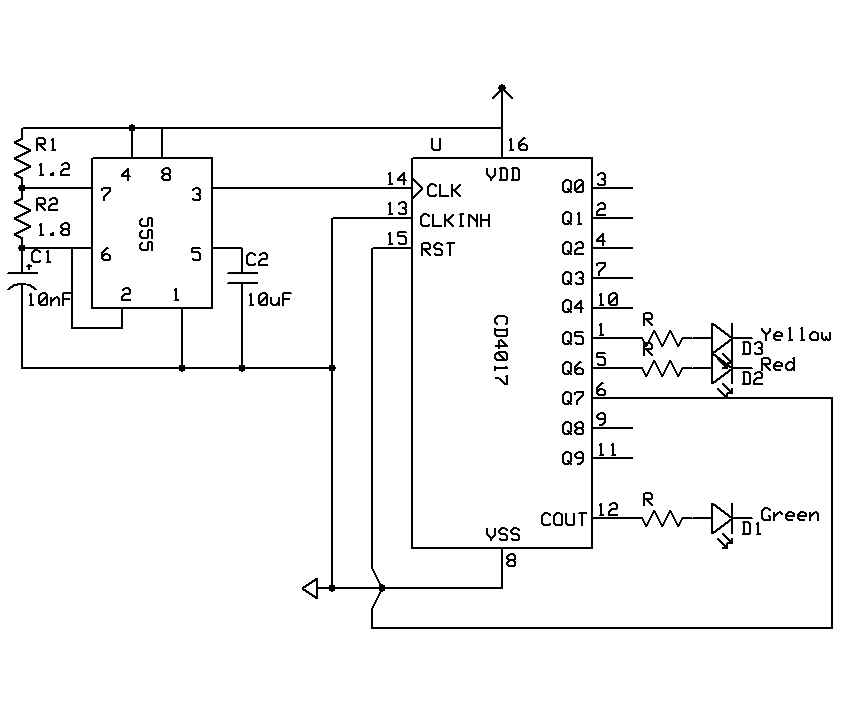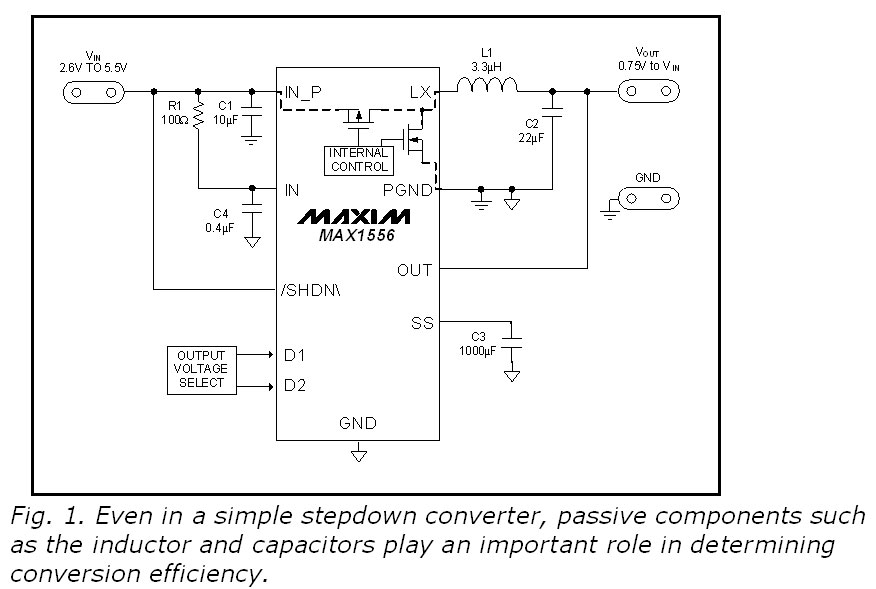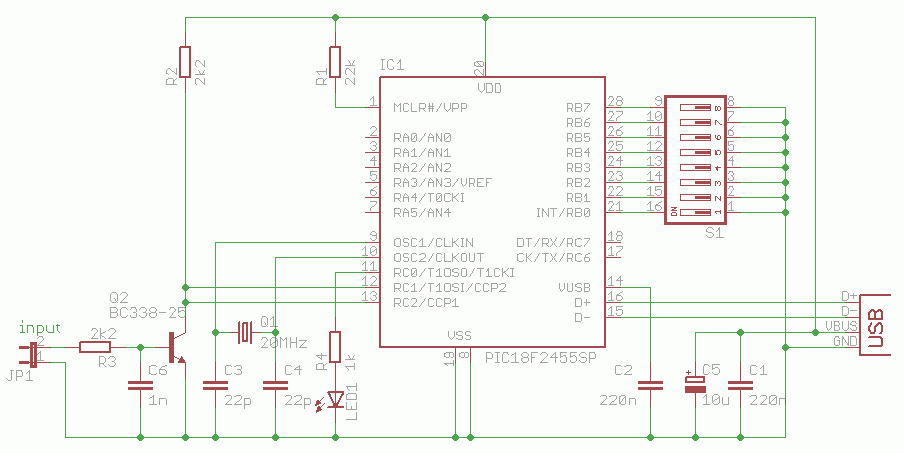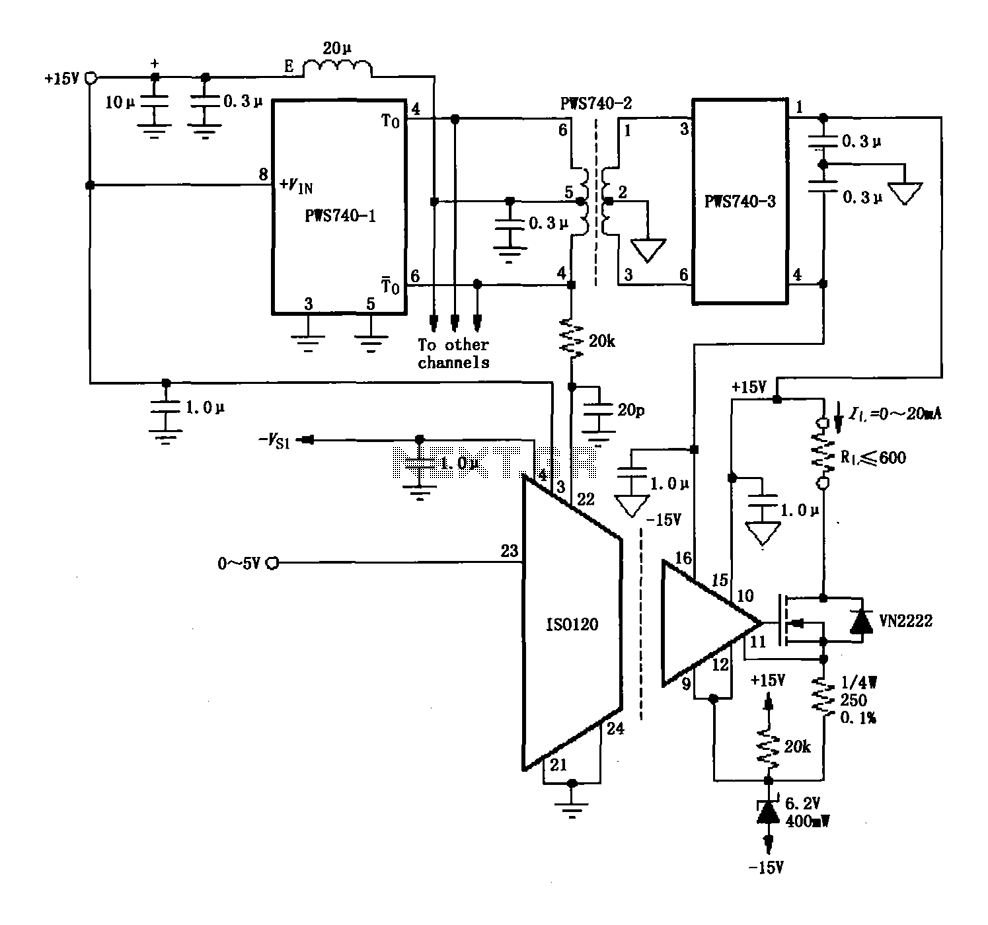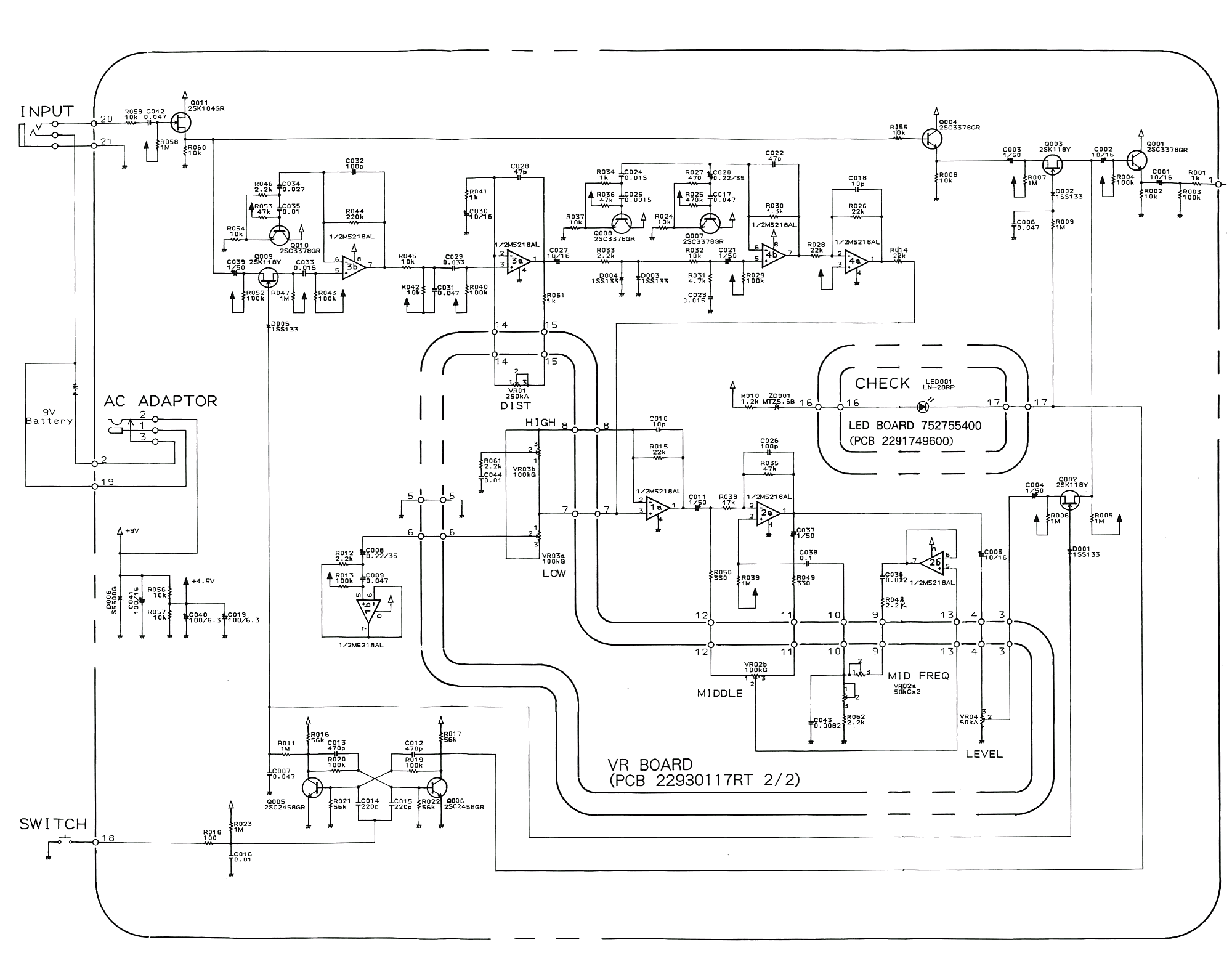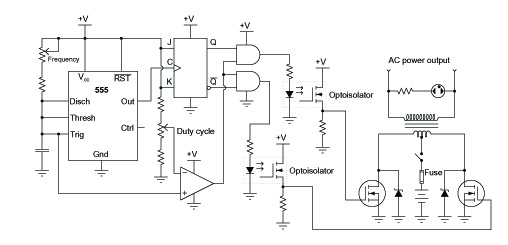
fire stick schematic diagram
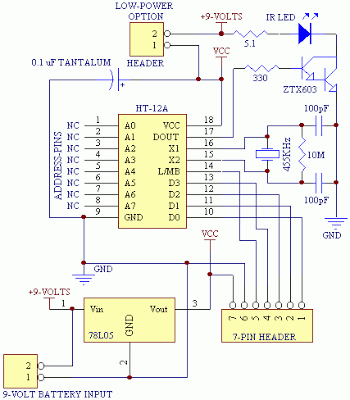
This article demonstrates how to construct a custom version of the Fire-Stick infrared remote control system. The LITEON infrared receiver modules originally integrated into the Fire-Stick have been discontinued, necessitating a redesign of the original circuit boards. The core functionality of the Fire-Stick relies on the Holtek HT-12A encoder IC. This compact encoder is specifically designed for infrared transmission and generates a 38 kHz carrier frequency for each data transmission. The data pins of the HT-12A serve dual purposes as both data input pins and transmit enable inputs. Unlike typical encoder ICs, which have separate transmit enable and data input pins, the HT-12A utilizes the data input pins for both functions. By grounding one of the data pins, the transmission cycle is initiated. During each transmission cycle, a predetermined sequence occurs. Notably, the logic state of the L/MB pin is evaluated before concluding the transmission cycle and reverting to standby mode. The L/MB pin functions as the Latch/Momentary selection pin, determining whether the HT-12A will conclude each transmission by sending the exact logic state from the data pins or by transmitting logic "1" seven times. If the L/MB pin is left unconnected, the transmission will convey the actual logic values present on the HT-12A data input pins. These logic values will latch onto the output pins of the HT-12D decoder IC until another transmission with different data is sent. The HT-12D decoder IC used in the Fire-Stick receiver typically operates in latched mode. Without the L/MB feature of the HT-12A encoder IC, the receiver would function in latched mode. The operation of the transmitter causes the corresponding data pins of the HT-12D decoder IC to latch at either logic 0 or logic 1, depending on the logic values from the HT-12A data input pins and the state of the L/MB pin. Utilizing the L/MB option of the HT-12A for momentary operation of the HT-12D allows the receiver output pins to be temporarily pulsed low and return to logic 1 after the transmission ends and the HT-12A data input pin is released from ground. The logic state of all address pins on both the encoder and decoder ICs must match precisely; otherwise, no changes will be reflected on the decoder output pins. The address pins provide a level of security and are advantageous when a similar transmitter operates within the receiver's range. This method efficiently controls multiple receivers in close proximity with a single transmitter. By adjusting the transmitter address to match that of each receiver, control over that receiver is achieved. With eight address pins, A0 to A7, a total of 256 address combinations are possible, allowing control of up to 256 separate receivers with a single transmitter or providing 256 security addresses for a transmitter/receiver pair.
The design of the Fire-Stick infrared remote control system involves careful consideration of the HT-12A encoder and HT-12D decoder ICs. The HT-12A operates at a standard voltage of 2.4V to 12V, making it versatile for various applications. Its internal structure includes a 38 kHz oscillator that modulates the data signal, ensuring reliable communication over infrared frequencies. The data pins, which can be configured for different functions, include an 8-bit data bus allowing for a wide range of control signals.
The L/MB pin's functionality is crucial for applications requiring momentary versus latched outputs. In momentary mode, the output of the HT-12D will only be active during the time the corresponding data pin on the HT-12A is grounded, allowing for features such as momentary switches or buttons that trigger short actions.
Addressing is another key feature of this system. By configuring the address pins, users can prevent interference from other devices operating on similar frequencies. The 256 unique addresses allow multiple systems to coexist within the same environment without cross-talk, enhancing the system's robustness and security.
When designing the circuit board, it is essential to ensure proper layout to minimize noise and maximize signal integrity. The infrared LED used for transmission must be selected based on its efficiency and wavelength, typically around 940 nm, which is optimal for most infrared receivers. The receiver module should be positioned to have a clear line of sight to the transmitter to ensure maximum range and reliability.
In summary, the Fire-Stick infrared remote control system is a sophisticated yet flexible design that leverages the capabilities of the HT-12A encoder and HT-12D decoder ICs. Its ability to handle multiple addresses and modes of operation makes it suitable for various applications, from simple remote controls to more complex automation systems.This article will show you how to build your own version of the Fire-Stick infrared remote control system. The LITEON infrared receiver modules originally designed-in to the Fire-Stick have been discontinued, and forced us to re-design the original circuit boards.
The principle works of the fire stick is the heart of the Fire-Stick is the Holtek H T-12A encoder IC. This handy little encoder was specifically designed for infrared transmission media, and internally generates the 38 KHz carrier frequency for each data transmission. The data pins of the HT-12A act as both data input pins & transmit enable inputs. Unlike most ordinary encoder ICs with separate transmit enable pins, and data input pins, the HT-12A uses the data input pins to take care of both input functions.
By pulling one of the data pins to ground, the transmission cycle is started. As with most encoders, a pre-determined sequence of events takes place during each separate transmission cycle. The HT-12A however, has a few internal extras that make it pretty flexible. Notice from the flow chart below that the logic state of the L/MB pin is checked prior to finishing the transmission cycle and returning to standby mode.
The L/MB pin serves as the Latch/Momentary selection pin, and determines whether the HT-12A will end each transmission cycle by sending the exact logic state present on each data pin, or end the transmission cycle by sending logic "1" 7 times as the data. If L/MB is left floating, (not connected), the transmission will send only the actual logic values present on each of the HT-12A data input pins.
This logic value will be latched onto the output pins of the HT-12D decoder IC until you send another transmission with different data. The HT-12D decoder IC used on the Fire-Stick receiver normally operates in latched mode. Without the added feature of the L/MB function of the HT-12A encoder IC, the receiver would normally operate in latched mode.
Operation of the transmitter causes corresponding data pins of the HT-12D decoder IC to latch at logic 0, or logic 1, depending on the actual logic values present on the HT-12A data input pins, and the state of the L/MB pin. Using the L/MB option of the HT-12A to select momentary operation of the HT-12D will allow the receiver output pins to be momentarily pulsed low, and then return to logic 1 once the transmission ends, and you release the HT-12A data input pin from ground.
The logic state of all address pins on both the encoder & decoder ICs must be 100% identical or no change will be seen on the decoder output pins. The address pins allow for a certain degree of security, and are beneficial if a similar transmitter will be operated within range of your receiver.
This simple method also provides an efficient means of controlling multiple receivers in close proximity to one another with a single transmitter. With different addresses on multiple receivers you need only adjust the address of the transmitter to match that of each receiver to gain control of that receiver.
With 8 address pins, A0 - A7, a total of 256 possible address combinations are possible. This means you can control up to 256 separate receivers with a single transmitter, or have up to 256 possible security addresses for a transmitter/receiver combination. 🔗 External reference
The design of the Fire-Stick infrared remote control system involves careful consideration of the HT-12A encoder and HT-12D decoder ICs. The HT-12A operates at a standard voltage of 2.4V to 12V, making it versatile for various applications. Its internal structure includes a 38 kHz oscillator that modulates the data signal, ensuring reliable communication over infrared frequencies. The data pins, which can be configured for different functions, include an 8-bit data bus allowing for a wide range of control signals.
The L/MB pin's functionality is crucial for applications requiring momentary versus latched outputs. In momentary mode, the output of the HT-12D will only be active during the time the corresponding data pin on the HT-12A is grounded, allowing for features such as momentary switches or buttons that trigger short actions.
Addressing is another key feature of this system. By configuring the address pins, users can prevent interference from other devices operating on similar frequencies. The 256 unique addresses allow multiple systems to coexist within the same environment without cross-talk, enhancing the system's robustness and security.
When designing the circuit board, it is essential to ensure proper layout to minimize noise and maximize signal integrity. The infrared LED used for transmission must be selected based on its efficiency and wavelength, typically around 940 nm, which is optimal for most infrared receivers. The receiver module should be positioned to have a clear line of sight to the transmitter to ensure maximum range and reliability.
In summary, the Fire-Stick infrared remote control system is a sophisticated yet flexible design that leverages the capabilities of the HT-12A encoder and HT-12D decoder ICs. Its ability to handle multiple addresses and modes of operation makes it suitable for various applications, from simple remote controls to more complex automation systems.This article will show you how to build your own version of the Fire-Stick infrared remote control system. The LITEON infrared receiver modules originally designed-in to the Fire-Stick have been discontinued, and forced us to re-design the original circuit boards.
The principle works of the fire stick is the heart of the Fire-Stick is the Holtek H T-12A encoder IC. This handy little encoder was specifically designed for infrared transmission media, and internally generates the 38 KHz carrier frequency for each data transmission. The data pins of the HT-12A act as both data input pins & transmit enable inputs. Unlike most ordinary encoder ICs with separate transmit enable pins, and data input pins, the HT-12A uses the data input pins to take care of both input functions.
By pulling one of the data pins to ground, the transmission cycle is started. As with most encoders, a pre-determined sequence of events takes place during each separate transmission cycle. The HT-12A however, has a few internal extras that make it pretty flexible. Notice from the flow chart below that the logic state of the L/MB pin is checked prior to finishing the transmission cycle and returning to standby mode.
The L/MB pin serves as the Latch/Momentary selection pin, and determines whether the HT-12A will end each transmission cycle by sending the exact logic state present on each data pin, or end the transmission cycle by sending logic "1" 7 times as the data. If L/MB is left floating, (not connected), the transmission will send only the actual logic values present on each of the HT-12A data input pins.
This logic value will be latched onto the output pins of the HT-12D decoder IC until you send another transmission with different data. The HT-12D decoder IC used on the Fire-Stick receiver normally operates in latched mode. Without the added feature of the L/MB function of the HT-12A encoder IC, the receiver would normally operate in latched mode.
Operation of the transmitter causes corresponding data pins of the HT-12D decoder IC to latch at logic 0, or logic 1, depending on the actual logic values present on the HT-12A data input pins, and the state of the L/MB pin. Using the L/MB option of the HT-12A to select momentary operation of the HT-12D will allow the receiver output pins to be momentarily pulsed low, and then return to logic 1 once the transmission ends, and you release the HT-12A data input pin from ground.
The logic state of all address pins on both the encoder & decoder ICs must be 100% identical or no change will be seen on the decoder output pins. The address pins allow for a certain degree of security, and are beneficial if a similar transmitter will be operated within range of your receiver.
This simple method also provides an efficient means of controlling multiple receivers in close proximity to one another with a single transmitter. With different addresses on multiple receivers you need only adjust the address of the transmitter to match that of each receiver to gain control of that receiver.
With 8 address pins, A0 - A7, a total of 256 possible address combinations are possible. This means you can control up to 256 separate receivers with a single transmitter, or have up to 256 possible security addresses for a transmitter/receiver combination. 🔗 External reference
